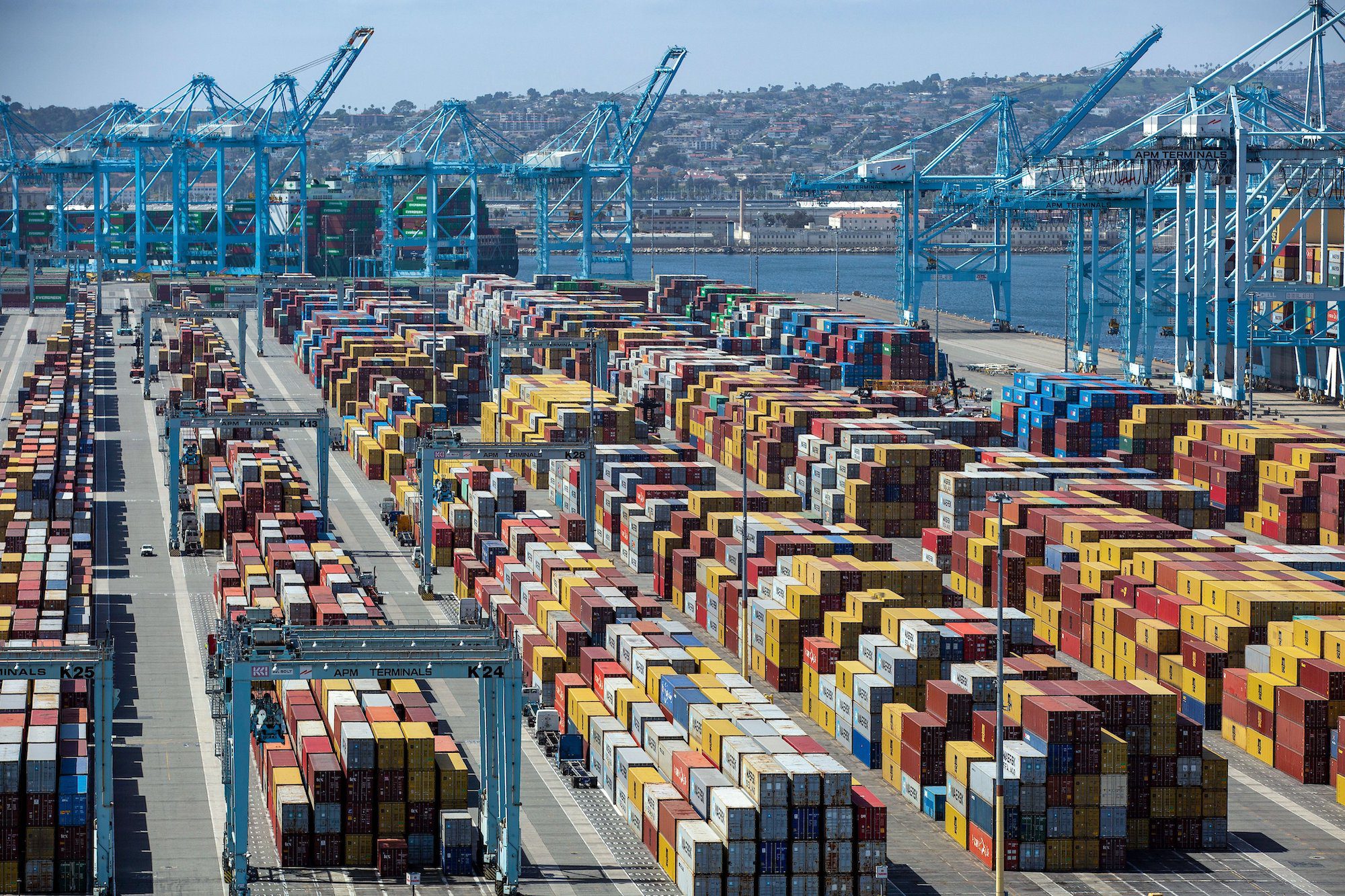Tariff Pause Propels Port of Long Beach to Record-Breaking July
The Port of Long Beach has achieved its most active July on record and the third-busiest month in its 114-year history, driven by a temporary pause in tariffs that boosted...

Cargo containers piled up at a marine terminal at the Port of Los Angeles in March 2022. Photo courtesy Port of Los Angeles
Both the Port of Los Angeles and Port of Long Beach recorded their busiest July ever as importers accelerate shipments amid concerns over impending tariffs, creating a stark contrast with projected declines for the remainder of 2025.
The Port of Los Angeles handled 1,019,837 Twenty-Foot Equivalent Units (TEUs) in July, marking the busiest month in the port’s 117-year history and an 8.5% increase compared to July 2024. This included 543,728 TEUs of loaded imports – the highest monthly import volume ever recorded at the port.
“Shippers have been frontloading their cargo for months to get ahead of tariffs and recent activity at America’s top port really tells that story,” said Port of Los Angeles Executive Director Gene Seroka. “Port terminals in July were jam-packed with ships loaded with cargo, processed without any delay—much to the credit of our dedicated longshore workers, terminal and rail operators, truckers, and supply chain partners”.
Similarly, the Port of Long Beach processed 944,232 TEUs in July, up 7% from its previous July record set in 2024, making it the third-busiest month in the port’s 114-year history. Imports at Long Beach rose 7.6% to 468,081 TEUs, while exports declined 12.9% to 91,328 TEUs.
Long Beach Port CEO Mario Cordero attributed the surge to retailers receiving goods purchased during a temporary tariff pause earlier this year, but warned of coming challenges. “Due to the ongoing uncertainty caused by shifting trade policies, our Supply Chain Information Highway digital tracking tool forecasts that cargo will be down about 10 percent in the second half of 2025, resulting in a flat year for volume”.
The record volumes come against a backdrop of concerning forecasts. According to the National Retail Federation’s Global Port Tracker report, U.S. ports are expected to see significant volume declines through the remainder of 2025, with projected drops of 5% in August, deepening to 19.5% in September, 18.9% in October, 21.1% in November, and 19.3% in December compared to 2024 figures.
“Tariffs are beginning to drive up consumer prices, and fewer imports will eventually mean fewer goods on store shelves. Small businesses especially are grappling with the ability to stay in business,” said NRF Vice President Jonathan Gold.
Shipping analyst John McCown characterized the situation as “one of the more striking year to year changes in U.S. container volume in the six-decade history of container shipping,” noting that while the first half of 2025 showed a 3.7% increase, the projected second-half decline translates to volumes being down 13.9% for the remainder of the year.
A BIMCO report confirmed that U.S. West Coast ports initially benefited from the early-year preloading rush with a 14.4% year-over-year increase in the first four months of 2025, but subsequently suffered a 9.2% decline in May and June. The organization’s Chief Shipping Analyst Niels Rasmussen noted that average spot freight rates from Shanghai to the U.S. have dropped over 60% since early June, “indicating continued import weakness during the third quarter which could extend into the rest of the year.”
The contrasting fortunes between record port volumes and bleak forecasts highlight the profound impact of shifting trade policies on global maritime commerce and supply chains.

Sign up for gCaptain’s newsletter and never miss an update

Subscribe to gCaptain Daily and stay informed with the latest global maritime and offshore news


Stay informed with the latest maritime and offshore news, delivered daily straight to your inbox
Essential news coupled with the finest maritime content sourced from across the globe.
Sign Up